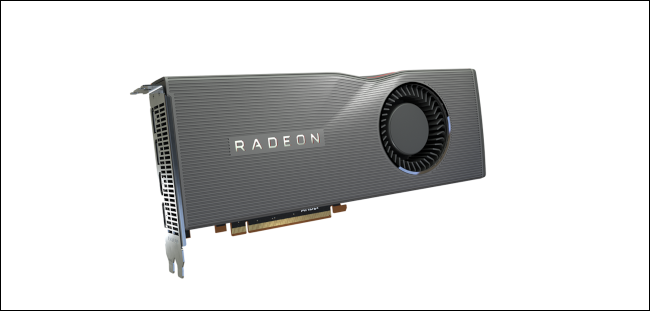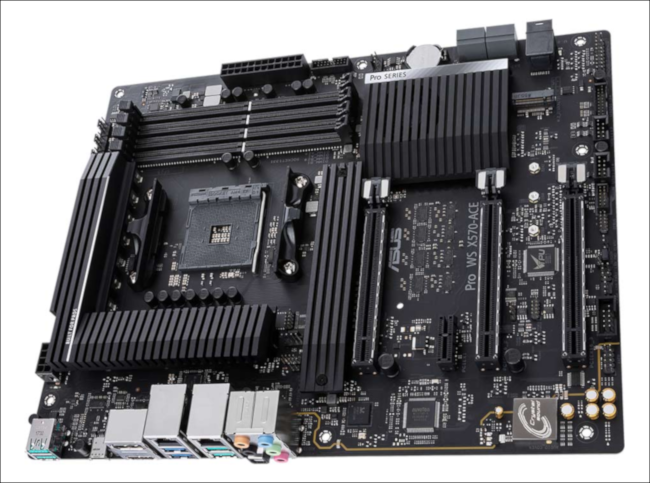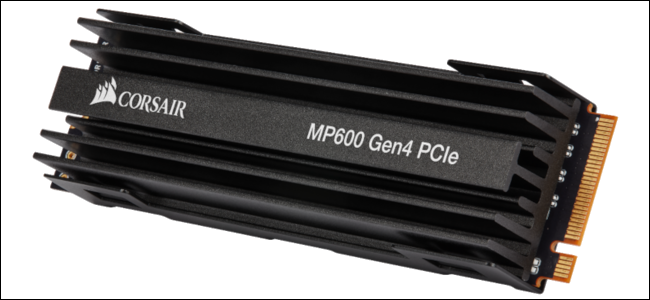Quick Links
PCI Express 4.0 hardware is here at long last. Solid state drives (SSDs) and graphics cards with PCIe 4.0 support debuted in June during Computex 2019. That's all thanks to AMD.
Faster computer parts is always an exciting prospect, but for now, we're mostly talking about noticeable increases in speed for M.2 NVMe "gum stick" SSDs. Graphics cards with PCIe 4.0 support are arriving in summer 2019, but gamers don't need the extra bandwidth they offer just yet. The debut comes two years after the PCIe 4.0 standard was published in mid-2017.
Complicating matters is that by the time gamers are clamoring for more bandwidth, we may be talking about a different version of PCIe altogether. Just as PCIe 4.0 is coming to computers, the PCI Special Interest Group (PCI-SIG)--the body responsible for releasing new PCIe standards--published PCIe version 5.0.
What Is PCIe?
The Peripheral Component Interconnect Express (PCIe) standard is how expansion cards communicate with your PC. This includes items such as graphics cards, sound cards, Wi-Fi cards, and M.2 NVMe SSDs. The higher the PCIe version, the higher the bandwidth available to a system's expansion cards.
PCIe expansion slots on your PC typically come in four flavors x1, x4, x8, x16. Those numbers denote how many "lanes" each expansion slot has. The more lanes a slot has the faster data can flow to and from the card. Modern graphics cards use x16 slots, for example, while M.2 "gum stick" NVMe SSDs use special slots with two or four lanes.
PCIe is also backward compatible. If you have a PCIe 4.0 graphics card you can use it with a motherboard designed for PCIe 3.0; however, the card's available bandwidth would be limited to the capabilities of PCIe 3.0. Conversely, a PCIe 3.0 card can fit in a PCIe 4.0 slot, but again it would be limited by PCIe 3.0.
Those are the absolute basics of PCIe. For a deeper dive check out our explainer on the different PCI Express ports on your motherboard.
What's New In PCIe 4.0?
The critical feature of any new PCIe version is that it doubles the bandwidth from the previous generation. There are all kinds of numbers being thrown around about what that means. But in practical terms a PCIe 4.0 x16 slot can theoretically hit approximately 32 gigabytes per second (GB/s) of data flowing in each direction, while PCIe 3.0 maxed out around, you guessed it, 16GB/s.
Many people will also talk about PCIe 4.0 x16 having a bandwidth of around 64 GB/s, but in that case, they are just counting the total amount of data flowing in both directions. Whichever way you count it there's a whole lot of speed coming to PCs, and graphics cards occupying PCIe 4.0 x16 slots are on their way.
Though as we said earlier adding bandwidth for graphics cards isn't really the issue right now as PCIe 3.0 serves gamers just fine. Peripherals like NVMe SSDs offer the most noticeable difference in speed for these early days of the new standard.
Beyond increased speed for components, PCIe 4.0 has better signal reliability and integrity for improved performance.
For running a PC at home, the most important thing to understand with PCIe 4.0 is that it doubles the bandwidth of PCIe 3.0.
When Can I Get It?
As we mentioned earlier, Computex 2019 is where PCIe 4.0 truly debuted with product announcements from AMD, Corsair, and Gigabyte, among others. Intel hasn't said anything about PCIe 4.0 for consumer hardware---and has even argued it won't help speed up your PC gaming---so, for now, PCIe 4.0 is all about AMD systems.
AMD announced its X570 chipset at Computex with PCIe 4.0 support, and manufacturers introduced dozens of X570 motherboards including ASRock, Asus, Gigabyte, and MSI. These X570 boards won't be cheap, and they are also expected to generate a good amount of heat. Almost every board from the average budget gamer unit to the ultra-deluxe RGB-equipped monster had fans to keep components cool. Higher-end boards also added extra heat sinks, pipes, and in some cases liquid cooling systems. That is just for the board itself and not typical.
In addition to a PCIe 4.0 motherboard, you'll need a processor that can support it, which means a third-generation Ryzen processor. At Computex, AMD announced five different Ryzen 3000 processors ranging in price from a $200 six-core processor to a $500 12-core workhorse. These new CPUs start shipping on Sunday, July 7, 2019.
Computex wasn't the end of AMD's PCIe 4.0 push. The company followed up a few days later at the E3 2019 gaming conference with two new graphics cards supporting PCIe 4.0 including the Radeon RX 5700 XT and the Radeon RX 5700. The new cards are also rolling out on Sunday, July 7, 2019.
Older Motherboards Won't Get PCIe 4.0
AMD's new processors still use the AM4 socket as previous Ryzen generations do. That means newer Ryzen 3000 chips can fit into motherboards built for Ryzen 2000 CPUs such as X470 and B450 motherboards; however, to get PCIe 4.0 you need a newer motherboard built for the new standard.
That may come as a surprise to some PCIe fans since motherboard manufacturers have already released firmware updates bringing limited PCIe 4.0 support to older boards. The trouble is these updates only work with particular motherboards that can handle the stringent demands of PCIe 4.0. Even then the upgrade is expected to work only with the top PCIe x16 slot (the one typically used for graphics cards) and possibly some M.2 slots.
AMD decided this mishmash of upgrades was far too complicated for the average person. To avoid confusion, the company put a stop to them. You may still find some motherboard updates online bringing PCIe 4.0 to older motherboards, but they are not recommended. If you want PCIe 4.0, the best plan is to shell out for a new motherboard and a new processor.
On top of Ryzen 3000 processors and X570 motherboards, Corsair also announced the Corsair MP600, an M.2 NVMe "gum stick" SSD that supports PCIe 4.0 with read speeds of nearly 5,000 Megabytes per second (MBps).
A high performing PCIe 3.0 M.2 NVMe drive, by comparison, hits around 3,500 MBps. Corsair's new M.2 also has a wicked looking heat sink to keep it cool. The MP600 launches in July.
Gigabyte announced an Aorus NVMe Gen 4 SSD with similar read speeds as Corsair's MP600. Instead of the big heat sink, Gigabyte's SSD comes with a full body copper heat spreader. Gigabyte didn't say exactly when the SSD would launch, but the company says it's coming soon.
Patriot, a smaller storage maker, also plans to roll out PCIe 4.0 SSDs later in 2019.
PCIe 5.0 Was Just Announced, Too
If the introduction of PCIe 4.0 parts wasn't complicated enough, the PCI-SIG used Computex to announce PCIe 5.0. Once again, we've got a doubling of bandwidth with 5.0. Instead of 32 GB/s in each direction for an x16 slot in PCIe 4.0, we get 64GB/s with PCIe 5.0.
Faster is better, so we're probably going to see PCIe 5.0 components come out soon, right? Maybe some companies will even ignore PCIe 4.0 altogether?
Well, not so fast.
AMD and its manufacturing partners are already investing in PCIe 4.0, so they may not want to jump ship right away. On top of that, getting over the technical challenges of implementing PCIe 5.0 should take some time.
We can already see that PCIe 4.0 runs hotter than PCs with PCIe 3.0, for example. That suggests we might not see PCIe 5.0 for quite some time as component and device makers perfect PCIe 4.0.
Then again, with Intel currently out of the loop on PCIe 4.0 support, the company might want to leapfrog to PCIe 5.0 to steal some of AMD's thunder, but that is just speculation. So far, neither AMD nor Intel seem all that interested in PCIe 5.0, so we might be waiting a few years yet.
For now, it's all about PCIe 4.0, and only for AMD-based systems.




